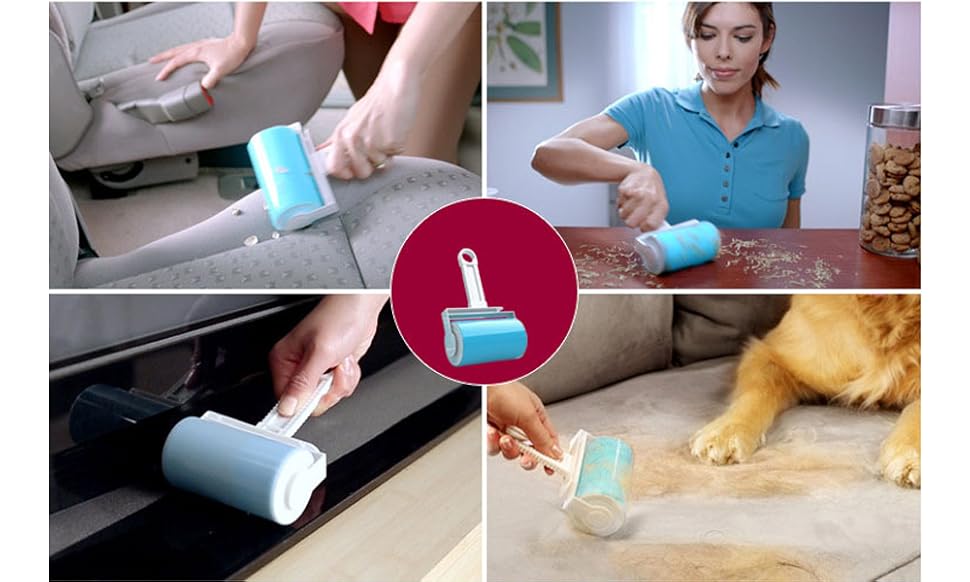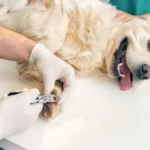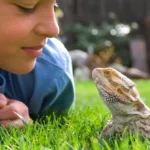Removing pet hair from your carpet is a never ending battle. Our furry companions bring us much love and joy, but they also shed copious amounts of fur that ends up woven into flooring fibers if not managed carefully.
This article provides a complete guide to removing pet hair from carpets through regular maintenance and hands on removal techniques. After reading, your floors will stay looking their best no matter how heavy the shedding season.
Why Removing Pet Hair Really Matters
While losing fur is a natural part of a pet’s coat cycle, leaving it to accumulate over time creates noticeable issues worth preventing.
Excess fallen hair winding up in carpets does more than just make a space appear messy it impacts health, triggers allergies, and speeds up carpet dirt.
To break it down further, removing pet hair acts as a magnet for additional debris. Vacuuming and foot traffic work fur deeper into the pile over weeks, trapping dirt, dander, pollen, and other allergens it comes into contact with.
This matted coating clogs fibers and prevents new falling hair from being extracted as easily. As a result, carpets end up looking visibly soiled much more rapidly despite cleaning efforts.
The allergens pet dander carries, such as flea saliva and shed skin, are also problematic for those with furry friend allergies or asthma.
Breathing in microscopic particles lodged in carpet fibers over the long term can worsen symptoms like itchy eyes, sneezing, and coughing if left unremoved. Daily exposure over weeks lowers air quality in homes.
Even our pets are affected by excessive fur accumulation! Dogs and cats inevitably ingest some of their own shed hairs during self-grooming.
While harmless in small amounts, stomachs filled with too much fur can potentially lead to digestive upset, hairballs, or skin irritation when hairs are re-deposited during shedding cycles. Regular hair removal keeps them most comfortable.
With potential impacts on appearances, indoor environments, and pet well-being, having a routine to dutifully banish pet fur is crucial in the long term.
The good news? With diligent vacuuming, strategic tools, and preventive practices, well-groomed carpets are totally achievable even with heavy shedders in the home.
Stage 1: Weekly Vacuuming Lays the Foundation
Regardless of additional cleaning strategies used, vacuuming carpets a minimum of once weekly forms a solid foundation for staying on top of shedding. But not all vacuums are created equal when it comes to extracting removing pet hair.
Upright vacuums with standard beater bar attachments do an adequate job of clearing away loose surface fur but are less suited for stubbornly clinging material. Canister vacuums equipped with a turbo brush or adjustable wand typically perform better, as their rotating heads agitate fibers to release embedded hair better. Compact handheld vacs are handy for quick cleanups above furniture but lack the power for thorough whole room cleans.
Beyond the vacuum itself, technique matters greatly. Pushing the beater bar at a 45-degree angle into carpets as you vacuum gets teeth in deeper between strands to dislodge more hidden hairs than just gliding over surfaces. Pay special attention along baseboards, in corners by walls, and underneath furniture where fur tends to gather thickest.
It’s also wise to periodically inspect vacuum components for wrapped hair clogging things up. Cut lodged material from brushes, spinning tubes, and wheels to maintain suction airflow. Failing to do so can greatly diminish a vacuum’s pickup ability over time. With regular care, vacuums stay primed to perform at their hair-removing best.
Proper vacuuming is the first line of defense, but additional tools are needed to evict elusive hairs that slip past suction tubes. Combining vacuuming with lint rollers, brushes, rakes, and solutions provides the multi-pronged approach necessary for truly fur-free carpets despite heavy shedding seasons.
Stage 2: Lint Rollers Nab Strays Between Cleanings
No matter how thoroughly floors are vacuumed weekly, stray hairs still scatter about surfaces. This is where having lint rollers on hand proves invaluable. Static-cling rollers instantly adhere to hard to reach errant strands before they migrate too deeply into carpet fibers over time.
Optimal lint rollers feature extra-large roll widths to cover more surface area per swipe. Refillable rolls that don’t produce unnecessary waste are eco-friendlier long term. Some lint rollers even incorporate ridges or serrations into their pickup surfaces helping grasp finer, less visible hairs standard rolls may glide over.
After weekly vacuuming, scan baseboards, cracks, and any textured furnishings with a lint roller as a supplementary catch all. They skillfully pluck hairs vacuums miss from seams, controls, and textured nooks where bristles can’t reach. Between cleanings, gently roll high traffic walkways and hangout spots prone to stray hairs to stay on top of shedding.
Stage 3: Specialized Brushes Comb For Removing Pet Hairs
While regular vacuuming dispatches most loose fur, a percentage persists in harder-to-remove places given time. This is particularly true along baseboards and in corners where foot traffic constantly works strands deeper. Motorized brushes like the Fur Zapper or Bissell Pet Hair Eraser address hidden trouble spots better than passive rollers and suction alone.
Battery powered bristle brushes leverage electrostatic charges or tightly set wire bristles capable of burrowing between strands to strategically scrape away stubborn accumulations. When attacked periodically, these powerhouses efficiently clear previously overlooked zones left fuzzier than the rest of the floors.
To use, glide heads slowly in straight lines over problem areas, observing for fur clumping on bristles as it’s extracted. Work grains back and forth until no additional hair lifts out before vacuuming collected strands. These targeted brushes save vacuums from having to handle the heaviest shedding pockets alone while deep-cleaning just trouble zones.
Stage 4: Carpet Rakes For Padding and Deeper Cleans
Throughout shedding seasons, certain repetitively used locations become actual fur magnets even with regular maintenance. For these crises demanding more intervention, carpet rakes remove ground in fibers vacuums and brushes cannot.
Smucker’s Cleaning Rake style carpet tools feature arrays of narrow scraping teeth able to penetrate carpet padding and grasp stubbornly clinging strands routers miss. To tackle the worst offenders, work rakes methodically over small zones, exerting gentle pressure in short strokes against them with the grain of fibers.
Built-up sections may take a few repetitions moving back and forth to fully flake off all embedded hair. Observe rake teeth regularly to remove accumulated clumps before they fall and require vacuuming. For delicate carpet backing, reduce scraping force near seams. Rakes provide a deep exfoliating action nothing else matches for rescuing truly matted areas.
Stage 5: Solution-Based Spot Treatment
While physical removal tools efficiently address shedding overall, a small percentage of problem spots can seem impervious even to rakes and determined vacuuming. For these final stragglers, carefully applying allergen-removing enzymatic cleaners or diluted white vinegar extends your arsenal.
To use, saturate the most stubborn locations with enzyme-based pet odor and allergen eliminators. Their bio-enzymes break down organic allergens and proteins clinging fur fast within fibers. Let work 5-10 minutes before extracting. A 50/50 white vinegar and hot water solution also eliminates greasy, sticky residues holding tenacious strands when sprayed on problem zones pre-vacuuming.
Lightly mist solutions are confined to trouble spots only, avoiding soaking thick areas which could trap odors. With treatments’ assistance, fur finally releases fully to vacuum away with renewed ease. Finicky remnants no longer stand a chance!
Stage 6: Removing Pet Hair the Prevent With Routine Mat Care
Avoiding situations calling for deep carpet extraction in the first place reduces efforts long-term. Following preventive steps limits fur making it indoors and becoming embedded to start:
- Daily brushing distributes shedding evenly over time instead of large clumps.
- Front-entry doormats scrape their paws before reaching carpeted areas indoors.
- Regular professional deep cleans conducted by Rug Doctor or similar services remove embedded allergens completely.
- Periodic vacuuming of furniture picks up hairs moved around rooms daily versus cars and couches tracking them onto floors.
Keeping hair contained and fur-prone zones meticulously maintained prevents major poufs from developing indoors and needing intensive troubleshooting. These few preventive habits aid hair control greatly!
With consistent vacuuming, rolling, brushing, raking, and occasional solution spot treatments, not to mention preventive mat management, pet owners gain freedom from constant carpet fur wrecks that slowly amass. By staying proactive weekly and targeting lingering fibers immediately as needed, floors stay invitingly plush and fresh for sharing with furry friends hassle-free.
FREQUENTLY ASK QUESTIONS
How do I get rid of pet hair everywhere?
A simple damp cloth will get rid of a lot of pet hairs microfiber cloths or sponges work particularly well.
What tool is used to remove pet hair from carpet?
Carpet rakes
What removes human hair from carpet?
Carpet Rake
How do you remove pet hair without tape?
Wipe down most fabric furniture with a damp rubber glove.
Why is my carpet full of hair?
Carpet fibers are notorious for trapping these hairs.
Conclusion
By making pet hair removal a regular habit through diligent vacuuming, rolling, brushing and occasional solution treatments. Carpets stay looking their best throughout heavy shedding seasons.
These thorough yet simple steps eliminate for that can harbor allergens and attract dirt. Most importantly, carpets remain a pleasant, clean space all household members can enjoy both two legged and four legged alike.
With the right maintenance strategy, well-groomed rugs are absolutely achievable even in homes with prolific shedders.

Hi. My Name is Alexander Bell. I am a professional content writer since 2006.
18+ years of experience crafting compelling and authoritative content for diverse audiences.
🖋️ Specialize in formal article writing, combining meticulous research with engaging storytelling.
📚 Proven track record of delivering high-quality content across various industries, including technology, finance, and healthcare.
💡 Skilled in SEO best practices and optimizing content for digital platforms to maximize reach and engagement.
🔍 Strong research capabilities, adept at distilling complex information into accessible, informative articles.
🎓 BA in English Literature












